Text

Gold vessel with hellenistic depictions of Scythians, Bosporan Kingdom, 4th century BC
from The State Hermitage Museum, St. Petersburg
421 notes
·
View notes
Text

enjoying baked beans with can-opener smoothdream
21K notes
·
View notes
Text

A Snake Sculpture (6th-11th Century AD), from U Thong District in Thailand.
📸 Bangkok National Museum.
580 notes
·
View notes
Text

Viktor Puzyrkov - Kyiv under occupation (1942)
429 notes
·
View notes
Text

Glenn Howarth (Canadian, 1946-2009) - Untitled (Tree with Lumberjacks)
75 notes
·
View notes
Text
How to declutter and organize without being a minimalist.
Nothing wrong with minimalism but it’s not always reasonable to tell someone to get rid of everything they hold dear just for a clean house. Though it is easier to keep a space cleaner when things have proper places.
First the main concept I use is known as Swedish death cleaning (kinda intense name but it works). The basic idea is thinking about an item and what is going to happen to it once you die. Basically you think would my friends and family want and treasure this item or would it cause the a lot of trouble.
Examples:
My vintage teddy bear collection. Family would probably want it and if not they are worth a good amount of money so they would get something either way. I would keep this.
My cardboard box collection. Family would probably immediately take it to the dump and it would cause them so hassle for little return. I won’t keep it.
There are items that have personal value and significance and you shouldn’t give those up just because people tell you to be a minimalist. But there are other items that won’t serve you or anyone really and you shouldn’t hang on to them.
Next idea is the find a place method (I don’t think I came up with this concept but I don’t have a good name for it)
Basic idea is you find a place for everything you can and if you have things left over question why it was last to find a spot. Is it because it doesn’t give you joy or serve you in a way that it would have an immediate spot set for it? Or is it because you need to find better ways to organize your space? The answers will lead you in different directions the first one you will get rid of that item the other you need to find a way to store the item.
To better store items.
Baskets and bins are a great way to pair like items together and it looks neater than just put in to drawers haphazardly (it also uses the fun bins and baskets you (or at least I )have collected finding them a space as well).
Items used regularly can be displayed or placed where they use so it is convenient. But if you never use your can opener it doesn’t belong on your counter it belongs in a drawer.
Make use of wall space and hang up shelves and hooks to display treasured items and use them for decoration.
Things that should never be kept.
Clothes that don’t fit (don’t make your body fit the clothes make the clothes fit your body)
Unsanitary or unhealthy items
Things that bring up bad feelings/memories
This is not how you get those pristine minimalist houses this is how you pair down without getting rid of everything. I always do this once a year and it gets easier each time because you begin to do it naturally throughout the year.
82 notes
·
View notes
Text

Cultura: Teotihuacana
Técnica: Modelado
Provenience unknown, possibly looted
MNA
41 notes
·
View notes
Text
watching bridgerton and obviously there were a lot of things wrong with the way socializing has worked in the past, but honestly the idea of a "calling hour" is so appealing. office hours for friendship. you can show up unannounced at my home between 1 and 3pm. you must leave by 3pm. I may give you a pastry. lets bring that back
49K notes
·
View notes
Text
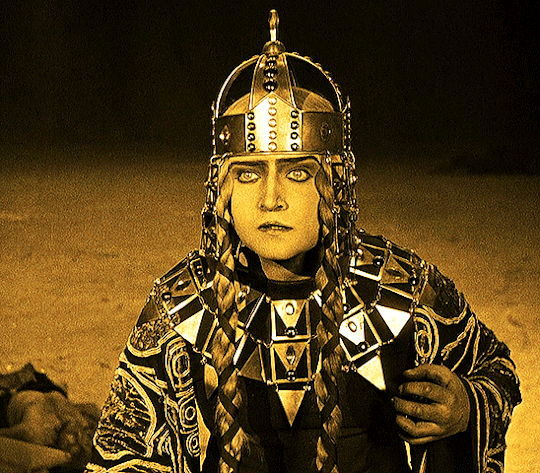
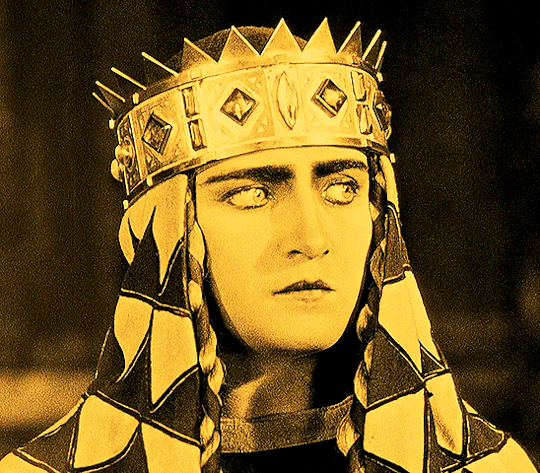
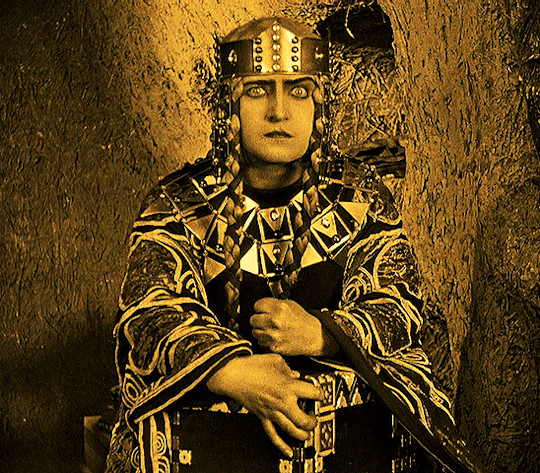
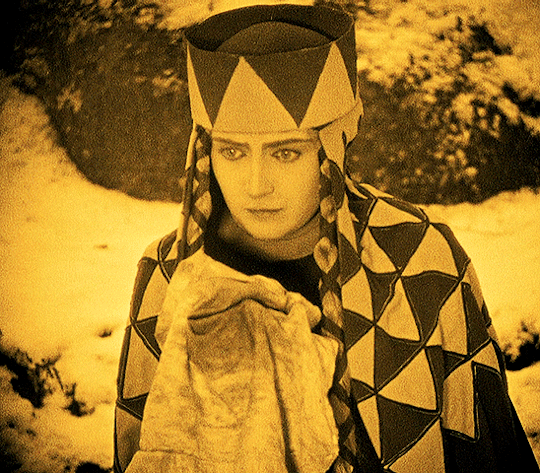
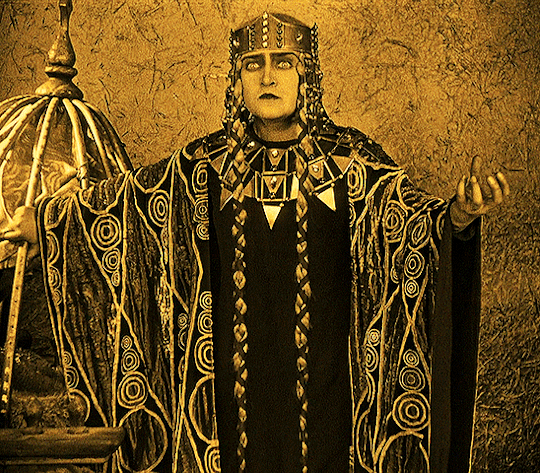
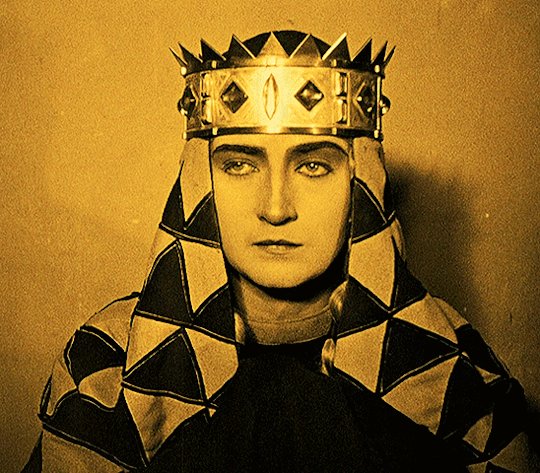
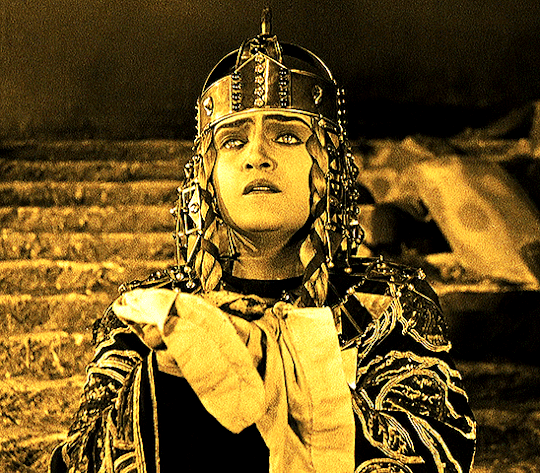

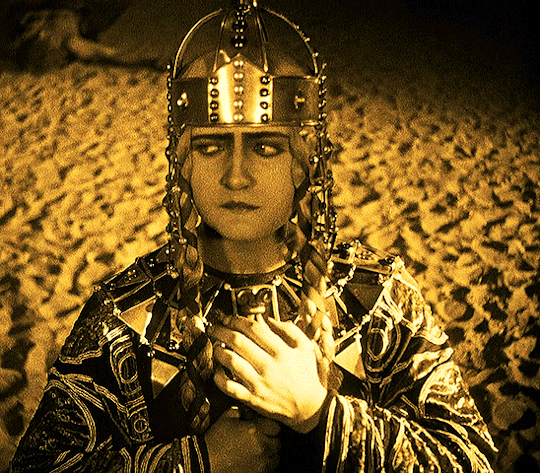
Margarete Schön as Kriemhild of Burgund
DIE NIBELUNGEN: KRIEMHILD'S REVENGE (1924) | dir. Fritz Lang
2K notes
·
View notes
Text
My least favorite things about anti- UBI discourse is always the techbros whining that "nobody is going to work anymore! People will just watch Netflix all day!" and I have 2 responses:

1) Who the fuck cares. Who the fuck cares what people do with their time! That's kind of the fucking point!
2) People aren't going to stop laboring. Housework (look, it's right there in the word!) will still need to be done. So will maintenance on our homes and personal spaces. Children will still need carers, as will the elderly and disabled. There are millions of examples of ~work~ that we do all the time, uncompensated, that won't suddenly stop because we aren't forced to sell our labor to provide corporation's profits.
I'm not surprised that what is traditionally women's work is invisible to these dipshits, but it never fails to anger me.
Anyway. Join the IWW.

64K notes
·
View notes
Text
Storytelling, Craft, and Conveying an Idea: or How I Learned to Stop Worrying and Love Jurassic Park
Okay I never had to learn to love Jurassic Park, and I never stop worrying.
Jurassic Park was the film Steven Spielberg directed just before Schindler’s List, and it’s nearly impossible for two films to be more different. Spielberg, at the time an acknowledged master of the summer blockbuster, didn’t think he was capable of directing a film with the weight and magnitude of Schindler’s List, and attempted to enlist other more respected, in his opinion more worthy directors for the project he intended to produce. It was only after these other directors turned him down that he took the helm himself. With Schindler’s List came a sea change in Spielberg’s film-making, after which he gained the confidence to take on more ambitious projects and make the kinds of movies that would bring him recognition not only as a man who made fun movies, but as a great filmmaker.
He did not spring fully formed as a great filmmaker. While his vision was much grander in his later films, Spielberg’s summer blockbusters already showed him to be a master of the craft of telling a story through cinema. This mastery of craft underpins all of Spielberg’s more ambitious movies. And, conversely, without his later grandness of vision, Spielberg’s storytelling craft is much easier to spot in films like Jurassic Park.
And this is why I want to talk about Jurassic Park, not because of what it means for Spielberg’s development as a filmmaker, but as an example of a finely crafted story. Artistic craft in general is the tools that enable an artist to convey an artistic vision to an audience. Storytelling craft more specifically is the ability to express ideas and themes in the form of a story so that they have emotional impact and are rendered compelling to an audience.
There is an idea among some critics and indeed some writers, that ideas get in the way of a good story, and writing a story with big ideas is a surefire way to get a very bad story. This is an understandable belief, but fundamentally misguided, because a story, no matter what the author’s intent, is going to express the author’s ideas, and it is much, much better for the author to know what ideas they are working to convey, so that the story and the ideas harmonize. So what ideas does Jurassic Park convey? What is the big idea at it’s heart?
Like all good stories, Jurassic Park has many ideas threaded through it, but the central theme, that the movie comes back to over and over, is the consequences of human hubris.
This is a common theme in the human storytelling tradition. The Greeks for example loved it. Frankenstein is such a story. Because of man’s hubris in creating life, disaster happens. With such a beginning, it’s unsurprising that modern stories of hubris, Individual hubris, and especially the collective hubris of humankind, would find a home in the speculative fiction genres, especially science fiction.
I was a certified scifi and fantasy nerd growing up, so I was bound at some point to stumble across the mid-twentieth century intellectual scifi sub-genre. If you spend any time in the speculative fiction genres, you probably know the type of story. They focus around a single idea that the author wants to make you think about. They are short, they often have a twist ending, and half the time the characters aren’t even named, they are so unimportant to the author. And once the idea has been expressed, the story ends. They are stories that aren’t really stories. Everything that would make for a good story with real emotional impact has been sacrificed in service of beating the audience over the head with the all important idea. They are the kind of story your well-meaning English teacher recommends to you because it will blow your mind.
I mention these stories for two reasons, one is that the consequences of human hubris is one of the most common ideas they attempt to convey, which makes sense, because they reflect the anxieties of the Cold War and the dawn of the nuclear age. Because of man’s hubris in splitting the atom, the world could end.
I am singularly unimpressed with the sub-genre and its modern descendants. I don’t think they’re half as smart as they pretend to be, and they’re boring. It’s not that the ideas these stories are trying to convey are without value, it’s simply that they are badly conveyed. And I would argue these stories, and other similar stories in other genres, are a big part of the reason for the disdain some writers and critics have for “stories with ideas”, i.e. stories where the teller sets out to convey ideas. Because these stories sacrifice all the characteristics of a good story to convey their idea more succinctly, they are indeed bad stories. And because they bash you over the head with their Big Idea, it can seem as if stories that convey their idea with more subtlety don’t have an idea to convey. This is why I have a certain amount of sympathy for this viewpoint, even though as I said earlier, there are ideas in every story, whatever author intent, and it’s much better to have them there deliberately were they can be integrated into the story in an intentional and thoughtful way. Storytelling and the ideas in a story don’t have to be in conflict. In fact they should not be.
The other reason is because these stories are much more likely to be respected as smart, cerebral than Jurassic Park in spite of often sharing the same underlying Big Idea, because of man’s hubris, disaster happens. I think this is because there is a strain of thought in the West that says that emotions and reason are in direct conflict and reason is superior. If a person is having an emotional response to something, they must not also be having an intellectual response, and this is bad. Emotional responses are bad and we should fear them. This is not true. Everything we know about human development and learning tells us the opposite, that humans learn and internalize information and ideas better when they make an emotional connection to them. Furthermore, a good story, where the ideas are integrated into the story allows the audience to tease out the themes and ideas for themselves, allowing for a simulated experience, and audience’s own discovery. Humans are also much more better able to learn what they discover for themselves than what they are told. Ironically this means that spoonfeeding an idea to an audience, as the terrible stories I talk about above do means that the audience is much less likely to learn that idea, or remember it. This also means that stories are a profoundly important means of conveying ideas. Humans are built to learn through stories.
So, with all that background in place, how does Jurassic Park tell a good story? How does it create emotional impact for its ideas? How does it show its ideas in a way that the audience gets to learn by simulated experience? How do the ideas and the story harmonize with the story serving the ideas at its core?
First and very simply, Jurassic Park gets its audience to care about its characters. Everything else, all of the emotional impact, rests on this. The novel Jurassic Park by Michael Crichton, on which the movie is based, has a lot more in common with the storyless scifi stories I mentioned above than it does with the movie. Crichton was great at coming up with high concept premises and not very good at actual storytelling, and this is why although Michael Crichton wrote the original screenplay for Jurassic Park the movie, Spielberg called for extensive rewrites mostly focusing on characters and character development, giving characters arcs, shuffling around traits, and rebuilding some characters from the ground up.
This is how Ellie Sattler got personality and agency, Alan Grant got his dislike of children, Ian Malcolm went from an obnoxious author surrogate who existed to explicitly state Crichton’s ideology while high on morphine, to an anxious intelligent audience surrogate, and John Hammond went from a greedy, grasping, conniving evil business man to a genial wealthy eccentric who wants to give children the experience of a lifetime. The children also are engaging and sympathetic instead of terminally annoying. This is also where the character arcs begin to take place. Alan Grant’s initial dislike of and discomfort with children leads to his character arc learning to understand and appreciate children, and Hammond, no longer so revolting, can learn his lesson and live instead of the well deserved death he gets in the novel.
Spielberg also demonstrates his understanding that character arcs serve a purpose. While character arcs can be a useful tool to keep a character, especially one who gets a lot of focus, interesting, there is nothing wrong with static characters. Character arcs should tie back to the themes of a story, and Jurassic Park the movie does just that, Hammond’s character arc especially. It’s Hammond’s hubris that leads to several deaths, and Hammond, his beloved grandchildren, and all of the main characters being placed in mortal peril, and it’s the consequences of this hubris that force Hammond to reconsider his core assumptions about the world, how it works, and his place within it. Grant’s character arc ties into many of the movie’s secondary themes. of coming together, of self sacrifice, and that children are the hope for the future.
Ellie Sattler and Ian Malcolm meanwhile do not have character arcs. In both cases, the ways in which they could evolve over the course of the story would be thematically weird. Ian is our anxious audience surrogate, who complains and warns of impending doom, and is visibly anxious and sarcastic throughout. In a lesser story, he would be eaten by dinosaurs. In a mildly lesser story, he would be given an arc about overcoming his fear. This arc would clash with the main theme of the story, because Ian’s fears are justified. He is the one not succumbing to hubris. Instead, what happens is Ian is shown to be both anxious and brave at the same time. He doesn’t have to change to be brave. When the time comes, he can show tremendous courage and self sacrifice, and then when that time is over, he can go right back to being visibly anxious. This subverts audience expectations and makes him a richer character without changing him and dealing with the thematic implications. Ellie meanwhile also does not have an arc. Instead, she is the one who articulates the realization Hammond needs to come to. Much like Ian, she represents where the other characters need to get to. Both characters do this for Hammond. but also for Grant. Ellie gently mocks his discomfort with children and shows her own lack of the same discomfort, while Ian regularly shows concern for the children, and understanding of them and their feelings. They both push and prod the two characters undergoing arcs into the changes they need to make without feeling preachy. And Ellie especially makes choices that advance the plot in positive ways, making her proactive and more interesting without forcing her to change.
But great characters are unimportant if the audience doesn’t get to know them before the emotional impact is delivered. Jurassic Park give the audience plenty of time to get to know the characters and watch them interact and bounce off each other. This process of getting to know the main characters and coming to like and identify with them means that later, we will care when they are in danger.
Spielberg also uses story structure to advance the themes of his story. The movie is structured in such a way as to build maximum suspense, but more importantly, it is designed to play on audience expectations, and to mimic within the movie the feeling of watching the movie. Spielberg knew of course when he was making the movie that his audience would go into the theater knowing certain things about the movie. There would be dinosaurs, they would be a towering special effects marvel, and then the dinosaurs would get loose and eat people. Instead of subverting this expectation, Spielberg gives it to us and sells it.
The first thing he does is show us a dinosaur, killing someone. This is off screen and only heard, and we don’t actually see much at all of the raptor. This gets everybody onto the same page. If you managed to miss the whole “people will be eaten” thing, now you know. And this is something that other characters can reference throughout the first part of the movie, to build suspense and highlight Hammond’s careless faith in the safety of his park. We are next introduced to Grant, Ellie, and most importantly, Hammond. Hammond in the movie is a clear surrogate for Spielberg himself, and the filmmakers more generally. This well-meaning showman will give the other characters dinosaurs in a stunning scientific and technical achievement, just as the movie will for the audience. And Grant and Ellie are sold on the park and the potential of seeing dinosaurs, the wonder and technological impressiveness much the same way the special effects dinosaurs are sold to the audience.
We are teased some more with the prospect of dinosaurs, we get to watch the characters interact, and then, at last, the movie, and Hammond, gives us what we, and the characters, have been waiting for. We get dinosaurs.
Within the movie, the dinosaurs are a stupendous, awe-inspiring fulfillment of all of the characters’ desire to see these amazing extinct creatures walking and breathing in front of them. And outside of the movie, the dinosaur special effects are a stupendous awe-inspiring fulfillment of all of the audience’s desire to see these amazing extinct creatures walking and breathing in front of them. For one transcendent moment, the experiences of the characters and the audience are in near perfect unity. This binds the audience closer to the characters, causing us to identify with them, and it allows us to buy into their journey, to become stakeholders in it.
This wouldn’t work if the special effects weren’t really just that good. The dinosaurs in Jurassic Park are breathtaking in how real they look. It’s been decades and they still look staggeringly real, more real even than the dinosaurs in some of the more modern installments in the franchise. This movie really is as close as most of us will ever get to that childhood dream of seeing real dinosaurs. And Spielberg sells it. He sells it hard, with sweeping visuals, John Williams’s soaring score, and every cinematic trick in his arsenal that I don’t know nearly enough about to describe. And he sells it not only because this is what the audience paid the price of admission for, but also because it does bind us to that character experience, and critically, it gets us to buy into the hubris at the center of the story. Yes we know the dinosaurs will end up eating people and it will all end in terror and tears, but aren’t they cool?
They really really are.
And because we the audience buys into the hubris, there is a sense of betrayal when it all goes wrong. And this emotional gut reaction is in spite of the fact that the entire audience knows this is coming. It’s the other thing we paid admission for, not just to see dinosaurs, but to see them eating people, to be thrilled and scared. The audience is given the shock of the hubris coming back to bite everyone. We experience through the story the theme of the story. And this is done so deftly it’s hard to realize it’s happening.
And that is why Jurassic Park is a shining example of storytelling craft, and why I love this movie.
33 notes
·
View notes
Text
crying at dooku being a full blown separatist political figure cause like imagine being Obi-wan and anakin and you flip to space!Fox news and Dooku's being interviewed on there as a Normal Guy and you have to try not to scream
1K notes
·
View notes
Text

❄️ Nrth-wind Presents: The Handler from Jurassic World: Chaos Theory
Headcanons:
She was socialized with the atrociraptors as part of their flock
As we don't know whether or not she is choosing not to speak or cannot speak, I will continue to write her as nonverbal. That said, I will also write her as a sign language user
Her job was not personal against the Camp Fam until her raptors were injured in the fight against the Allosaurus and Big Eatie
She does not support the illegal trafficking of dinosaurs, but she doesn't see that as her job to stop, as she is simply looking out for herself and her flock. Working with The Broker is a source of income and protection for herself and the atrociraptors
She has a lot of respect for The Broker, but similar to the above, she is prepared to go solo and end their working relationship if it stops being in her best interest, and the best interest of her raptors
She is now evermore determined to find the Camp Fam and make them pay for the fight that injured her atrociraptors
Feel free to reach out if you're interested in an RP with her!
10 notes
·
View notes
Text
I think one of the most beautiful things about learning an ancient or dead language, is the pure humanity thereof.
You could do or learn something more functional, sure, but you're taking time to understand the essence of a people long left behind in time.
These people, now dead for centuries or even millennia, wrote things down and in doing so, said:
"I was here, remember me"
And here, eras later, we take time to decipher, read, and understand it, to say into the void of their existence:
"We see you, we know you, you are still alive."
2K notes
·
View notes
Text

Alice Barber Stephens - Woman and Bear Hunter (1896)
369 notes
·
View notes
Text
you are wanted. i hope you know that. by not only me, i am sure. your beauty has to have been recognized. even if i never get to tell you that i see this garden of wisdom, of grace, of magnificence, in you, someday, someone will. believe them, please.
8 notes
·
View notes
Text

In the summer of 1990, Amblin Entertainment left a message on my answering machine. I called back and asked: Amblin who? They told me that they were Steven Spielberg’s Movie company, and that he was beginning work on a movie version of Michael Crichton’s novel, Jurassic Park. Would I be interested in working on it?
This led to a great deal of fun, creating preproduction art for the Velociraptor and Tyrannosaurus segments of the movie (available as prints). They also wanted a poster image, and I created this one. There was a disagreement between Spielberg and Amblin’s marketing department, who wanted a logo approach that matched the cover of Crichton’s novel. Spielberg himself called me one Friday to say: “It’s a go. Finish that painting and it will be the movie poster.” I worked all weekend to get it done. By Monday, the marketing department had regained control, and it was never used.
THIS FUCKING JOHN GURCHE POSTER GOES FUCKING INSANE???? OH MY GOD??????? IM NOT SURPRISED SPIELBERG HIMSELF ASKED HIM TO FINISH IT THIS IS. WOW
30 notes
·
View notes